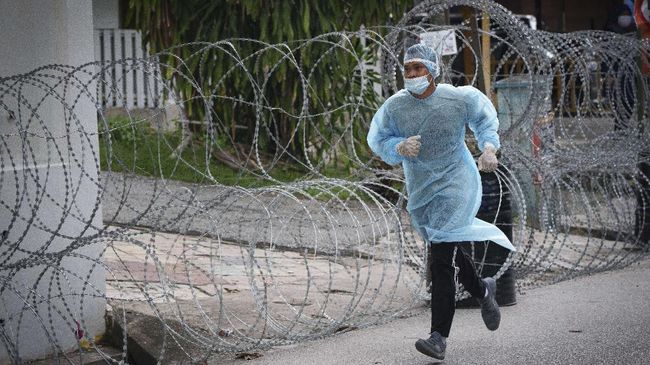Surabaya: Lecturer at the Department of Pediatrics, Faculty of Medicine Airlangga University (UNAIR) Retno Asih Setyoningrum said the handling of children exposed to COVID-19 depends on the degree of illness. In certain cases, children who are exposed to COVID-19 can be done by: self isolation.
However, he said, there are several conditions that must be met in order to self-isolate. For example, asymptomatic, experiencing mild symptoms such as cough, runny nose, fever, diarrhea, vomiting, and rashes. Then, the child is active and can eat and drink, apply cough etiquette, monitor symptoms or complaints, perform body checks twice a day in the morning and evening, the home or room environment has good ventilation.
“The tools that must be provided at home when children are exposed to COVID-19 are thermometers and oximeters,” said Retno citing a press release from UNAIR, Friday, July 23, 2021.
How do you feel about this article?
–
–
In addition, he said, there are several medicines that need to be prepared at home, namely fever medicine, vitamin C (1-3 years a maximum of 400 mg/day; 4-8 years a maximum of 400 mg/day; 9-13 years a maximum of 1200 mg/day ; 14-18 years maximum 1800 mg/day), zinc 20 mg/day given for 14 days; vitamin D3 (aged less than 3 years 400 IU/day; children 1000 IU/day; adolescents 2000 IU/day; obese adolescents 5000 IU/day).
Retno emphasized that in handling children who were self isolation there is no requirement to consume additional nutrients such as milk sold in the market. “Essentially it is nutritious nutrition, nothing special has to be milk,” he said.
Read: Unair Psychologist Shares Ways to Reduce Stress and Anxiety During a Pandemic
However, there are some complaints that parents must be aware of when caring for a child who is in self-isolation. The complaints are that the child sleeps a lot, breathes fast, there is a hollow in the chest and nose that rises and falls, oxygen saturation is less than 95 percent, red eyes, there is a rash.
In addition, swollen neck, fever for more than 7 days, can not eat and drink, sunken eyes, decreased urination, and decreased consciousness. “If the child has these symptoms, then immediately take him to the hospital,” he said.
Retno said the symptoms of COVID-19 in children were very diverse. Starting from mild symptoms, to severe life-threatening. “The symptoms depend on the phase of illness, previous health conditions, the presence of comorbid diseases, as well as other specific features such as congenital abnormalities,” he said.
However, fever is a common symptom in children. Other symptoms that are felt can be symptoms of acute respiratory infections such as fever, cough, runny nose to shortness of breath. However, there are also children who do not have specific respiratory symptoms, but have been exposed to COVID-19 with symptoms in the digestive tract such as abdominal pain, diarrhea, and vomiting.
“There is even the emergence of systemic symptoms or Multisystem inflammatory syndrome in Children (MIS-C),” he explained.
(BUT)
– .


